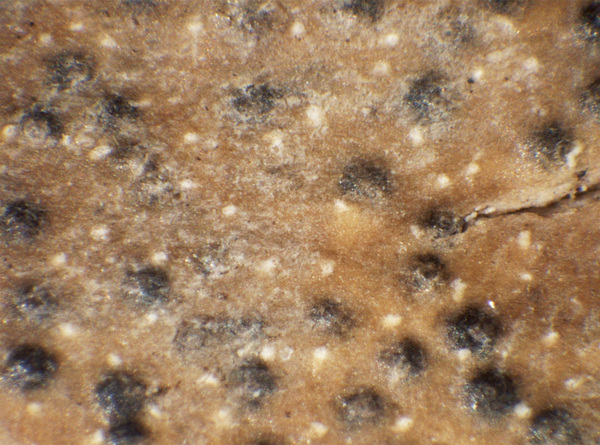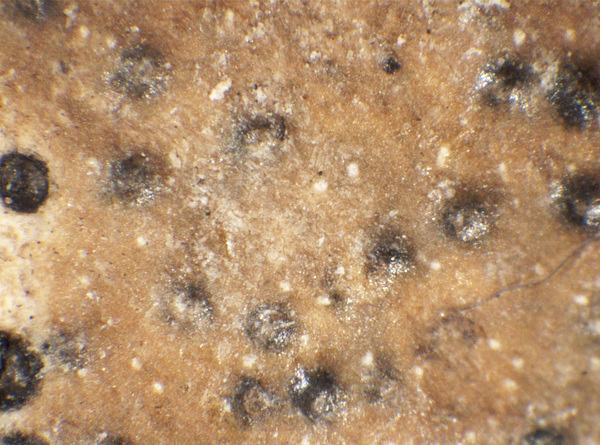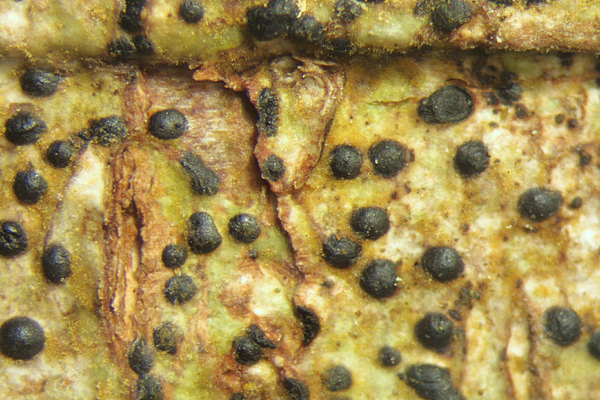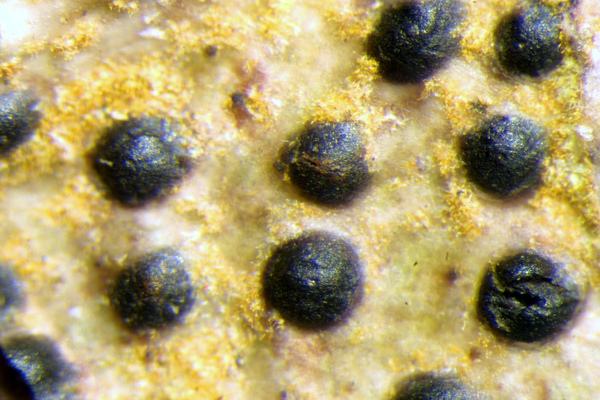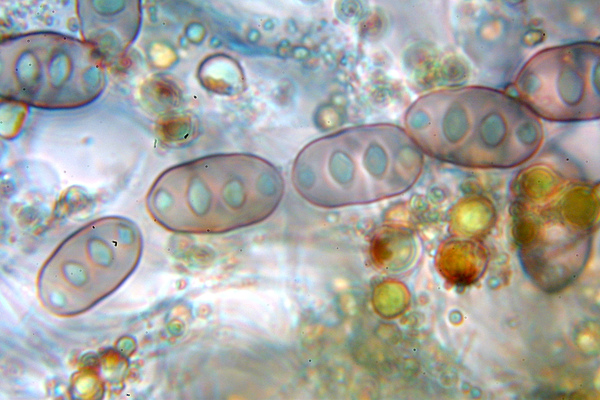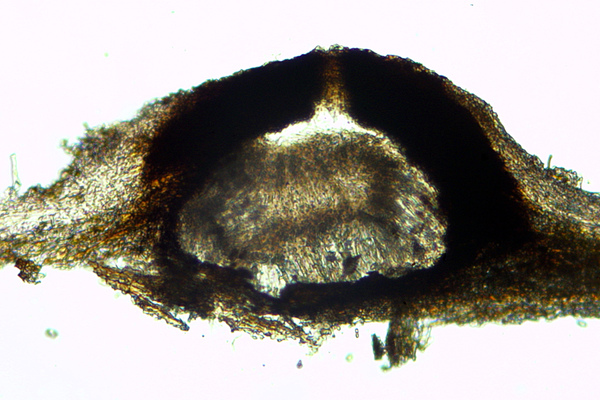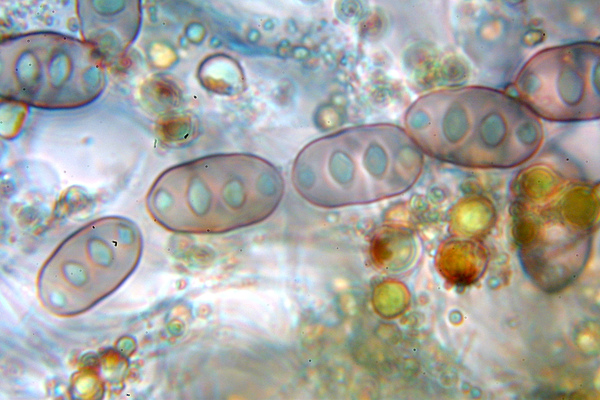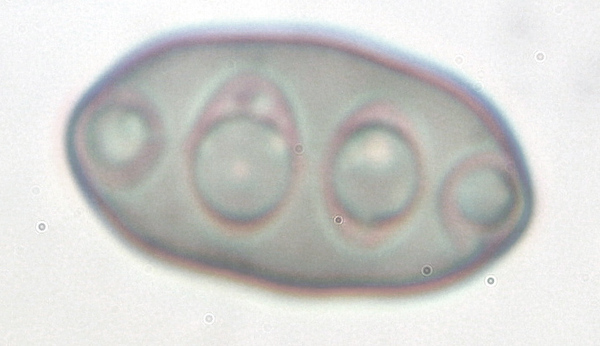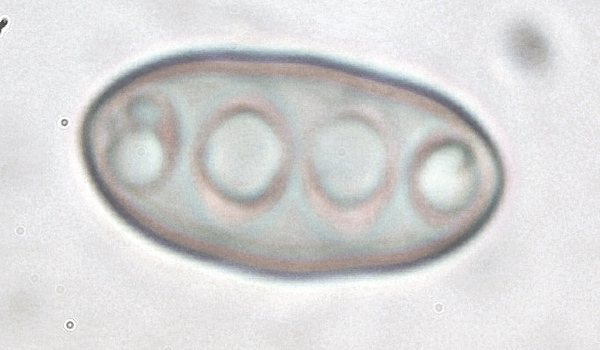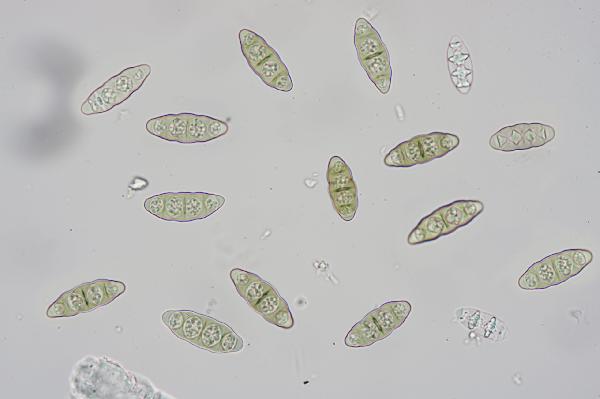Pyrenula chlorospila Arnold
Flora, 70: 155, 1887.
Synonyms:
Distribution: N - Lig (Giordani & al. 2009, Giordani & Incerti 2008). C - Tosc (Fačkovcová & al. 2024), Laz (Massari & Ravera 2002), Abr (Ravera & al. 2016), Sar (Rizzi & al. 2011, Di Nuzzo & al. 2022). S - Camp (Nimis & Tretiach 2004, Garofalo & al. 2010), Pugl (Nimis & Tretiach 1999, Durini & Medagli 2004), Bas (Bartoli & Puntillo 1998, Nimis & Tretiach 1999, Potenza 2006, Puntillo & al. 2009, Potenza & al. 2010), Cal (Puntillo 1996, Sérusiaux 1998, Puntillo & Puntillo 2004, 2012), Si (Nimis & al. 1994).
Description: Thallus crustose, endosubstratic or thinly episubstratic, olive-green to pale brown, slightly glossy, smooth, with white, punctiform pseudocyphellae, several thalli often forming mosaics, the individual thalli delimited by black hypothalline lines. Perithecia black, numerous, 0.2-0.4 mm across, immersed or forming very low projections, the ostiole central, often surrounded by a lighter coloured area. Involucrellum brown-black, very thin, closely adhering to the whole exciple, of filamentous hyphae interspersed with bark cells and often crystals; exciple black, with calcium oxalate crystals, K-; hymenium colourless, not inspersed with oil droplets, K-; hamathecium of branched and anastomosed periphysoids, later substituted by more or less unbranched paraphyses; ostiole with periphyses. Asci 8-spored, narrowly cylindrical, long-stalked, bitunicate, with tholus, thickened at apex with an internal apical beak, non-amyloid. Ascospores 3(-5)-septate, slightly constricted at septa, brown, thick-walled, broadly fusiform with rounded apices, the locules lenticular to diamond-shaped, 20-35 x 8-15 μm. Pycnidia black, immersed, often aligned along the prothalline line. Conidia narrowly falcate. Photobiont trentepohlioid. Spot tests: thallus K+ yellow, C-, KC-, P+ faintly yellow, UV- or UV+ whitish. Chemistry: thallus with an unidentified substance. Note: a mild-temperate to Mediterranean-Atlantic species found on smooth bark (especially of Fraxinus and Salix, but also of Corylus and Quercus) in deciduous open forests, often along rivers; mainly Tyrrhenian in Italy.
Growth form: Crustose
Substrata: bark
Photobiont: Trentepohlia
Reproductive strategy: mainly sexual
Most common in areas with a humid-warm climate (e.g. most of Tyrrenian Italy)
Commonnes-rarity: (info)
Alpine belt: absent
Subalpine belt: absent
Oromediterranean belt: absent
Montane belt: absent
Submediterranean belt: extremely rare
Padanian area: absent
Humid submediterranean belt: rare
Humid mediterranean belt: very rare
Dry mediterranean belt: absent

Predictive model
Herbarium samples
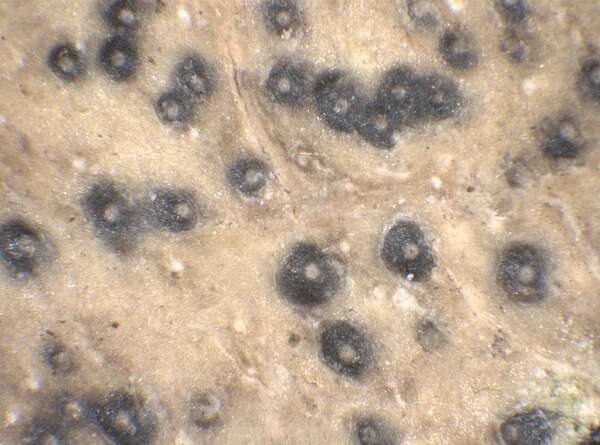

P.L. Nimis; Owner: Department of Life Sciences, University of Trieste
Herbarium: TSB (21928)
2003/03/17
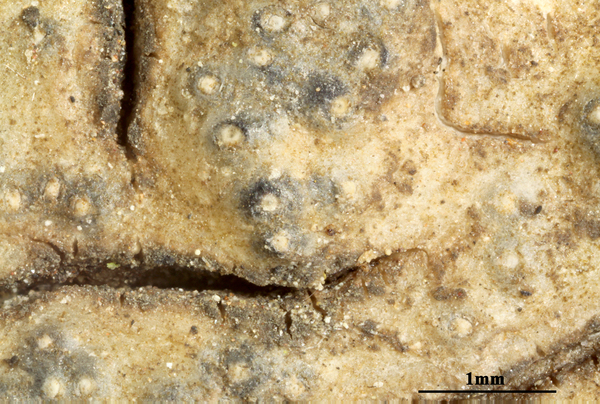

Felix Schumm - CC BY-SA 4.0
[ABL75500], Tenerife, Los Silos, along track to Erjos, on laurisilva tree, 400 m, 28°21’02’’ N, 16°48’48’’ W. Leg. A. Aptroot (no 75500), 8.01.2017, det. A. Aptroot, 2017.
Thallus olive-green to pale brown or fawn; pseudocyphellae 40–120
μm diam., white. Ascomata small, 0.2–0.4 mm diam., often rather
densely arranged, forming very low projections in the thallus or not
forming projections; exciple containing colourless crystals; hamathecium
not inspersed with droplets, without anthraquinones. Ascospores
(25–)28–32(–35) × (9–)11–13(–14) μm, brown, 3-septate. Thallus C-,
K+ yellow, KC-, P+ faintly yellow, UV+ whitish (unidentified
substance).
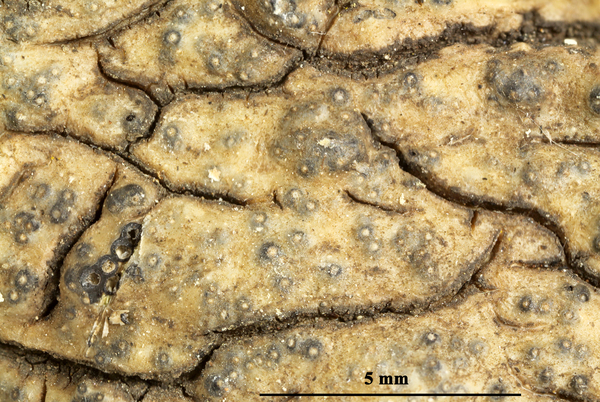

Felix Schumm - CC BY-SA 4.0
[ABL75500], Tenerife, Los Silos, along track to Erjos, on laurisilva tree, 400 m, 28°21’02’’ N, 16°48’48’’ W. Leg. A. Aptroot (no 75500), 8.01.2017, det. A. Aptroot, 2017.
Thallus olive-green to pale brown or fawn; pseudocyphellae 40–120
μm diam., white. Ascomata small, 0.2–0.4 mm diam., often rather
densely arranged, forming very low projections in the thallus or not
forming projections; exciple containing colourless crystals; hamathecium
not inspersed with droplets, without anthraquinones. Ascospores
(25–)28–32(–35) × (9–)11–13(–14) μm, brown, 3-septate. Thallus C-,
K+ yellow, KC-, P+ faintly yellow, UV+ whitish (unidentified
substance).


Felix Schumm - CC BY-SA 4.0
[ABL75500], Tenerife, Los Silos, along track to Erjos, on laurisilva tree, 400 m, 28°21’02’’ N, 16°48’48’’ W. Leg. A. Aptroot (no 75500), 8.01.2017, det. A. Aptroot, 2017.
Thallus olive-green to pale brown or fawn; pseudocyphellae 40–120
μm diam., white. Ascomata small, 0.2–0.4 mm diam., often rather
densely arranged, forming very low projections in the thallus or not
forming projections; exciple containing colourless crystals; hamathecium
not inspersed with droplets, without anthraquinones. Ascospores
(25–)28–32(–35) × (9–)11–13(–14) μm, brown, 3-septate. Thallus C-,
K+ yellow, KC-, P+ faintly yellow, UV+ whitish (unidentified
substance).


Felix Schumm - CC BY-SA 4.0
[ABL75500], Tenerife, Los Silos, along track to Erjos, on laurisilva tree, 400 m, 28°21’02’’ N, 16°48’48’’ W. Leg. A. Aptroot (no 75500), 8.01.2017, det. A. Aptroot, 2017.
Thallus olive-green to pale brown or fawn; pseudocyphellae 40–120
μm diam., white. Ascomata small, 0.2–0.4 mm diam., often rather
densely arranged, forming very low projections in the thallus or not
forming projections; exciple containing colourless crystals; hamathecium
not inspersed with droplets, without anthraquinones. Ascospores
(25–)28–32(–35) × (9–)11–13(–14) μm, brown, 3-septate. Thallus C-,
K+ yellow, KC-, P+ faintly yellow, UV+ whitish (unidentified
substance).
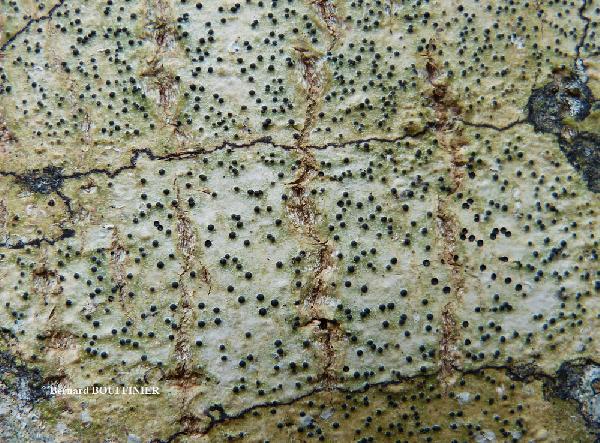
Bernard Bouffinier - Source: http://www.lichensmaritimes.org/index.php?task=fiche&lichen=421&lang=en
France, Camaret

Bernard Bouffinier - Source: http://www.lichensmaritimes.org/index.php?task=fiche&lichen=421&lang=en
France, Camaret

Bernard Bouffinier - Source: http://www.lichensmaritimes.org/index.php?task=fiche&lichen=421&lang=en
France, Camaret
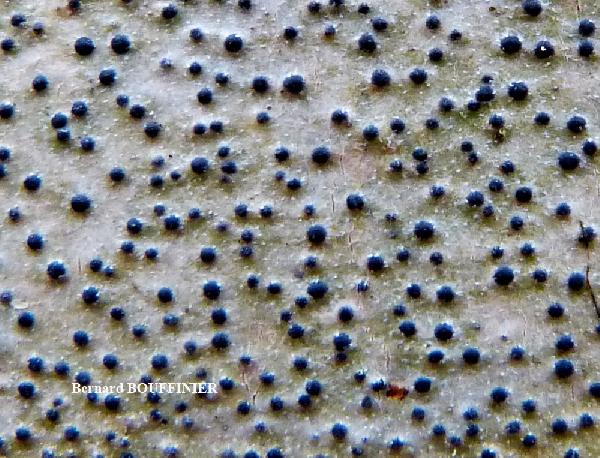
Bernard Bouffinier - Source: http://www.lichensmaritimes.org/index.php?task=fiche&lichen=421&lang=en
France, Camaret
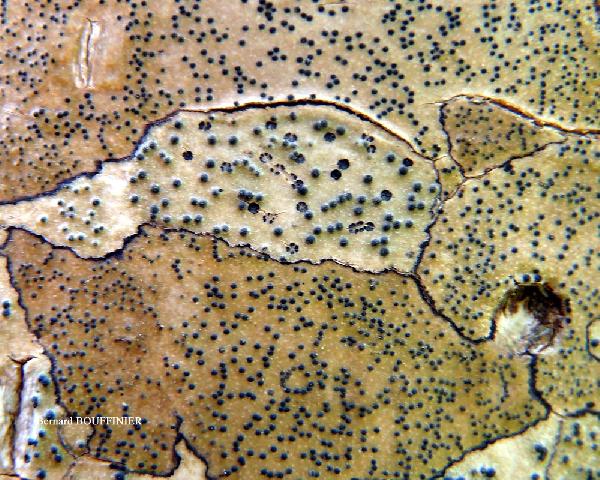
Bernard Bouffinier - Source: http://www.lichensmaritimes.org/index.php?task=fiche&lichen=421&lang=en
France, Lesteven
with P. macrospora (center)
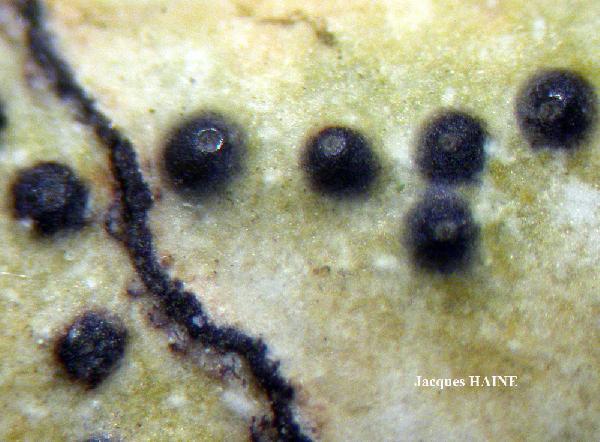
Jacques Haine - Source: http://www.lichensmaritimes.org/index.php?task=fiche&lichen=421&lang=en
France, Landevennec
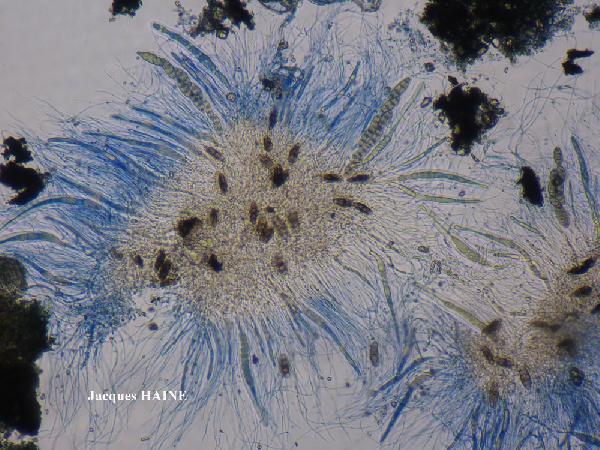
Jacques Haine - Source: http://www.lichensmaritimes.org/index.php?task=fiche&lichen=421&lang=en
France, Landevennec
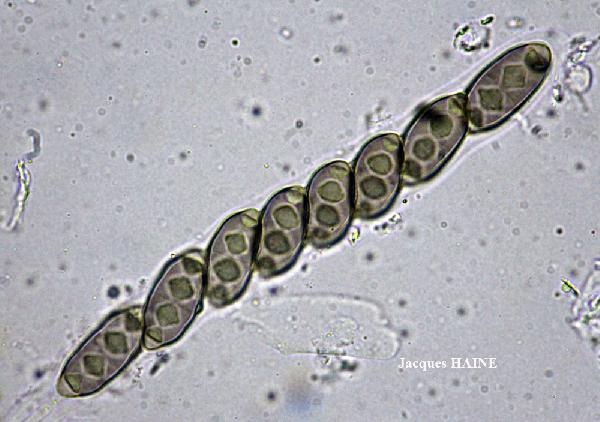
Jacques Haine - Source: http://www.lichensmaritimes.org/index.php?task=fiche&lichen=421&lang=en
France, Landevennec
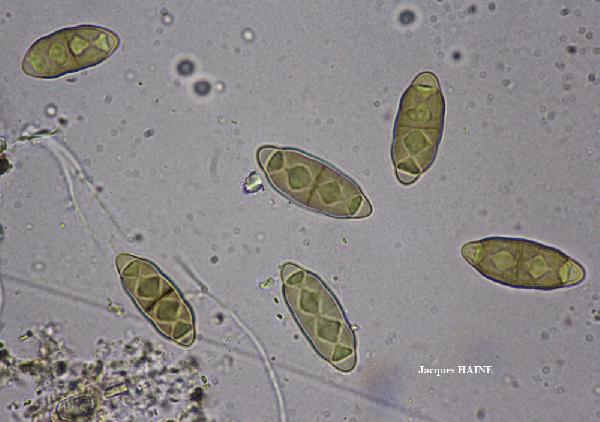
Jacques Haine - Source: http://www.lichensmaritimes.org/index.php?task=fiche&lichen=421&lang=en
France, Landevennec
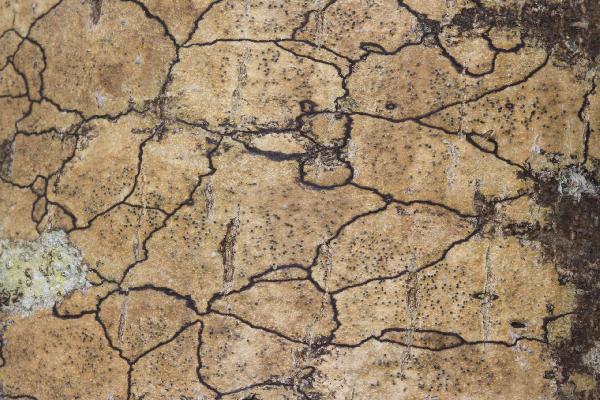
Marta Gonzalez Garcia - Centro de Estudios Micologicos Asturianos
Spain, Jardín Botánico de Gijón, (Asturias), 22-I-2022, en corteza de Alnus lusitanica, leg. & det. Marta González, ERD-9215.
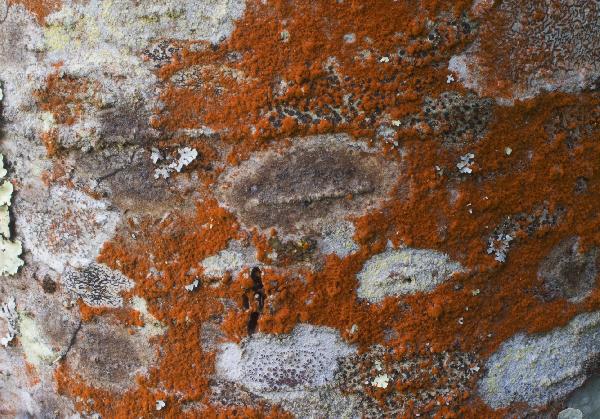
Marta Gonzalez Garcia - Centro de Estudios Micologicos Asturianos
Spain, Jardín Botánico de Gijón, (Asturias), 22-I-2022, en corteza de Alnus lusitanica, leg. & det. Marta González, ERD-9215.
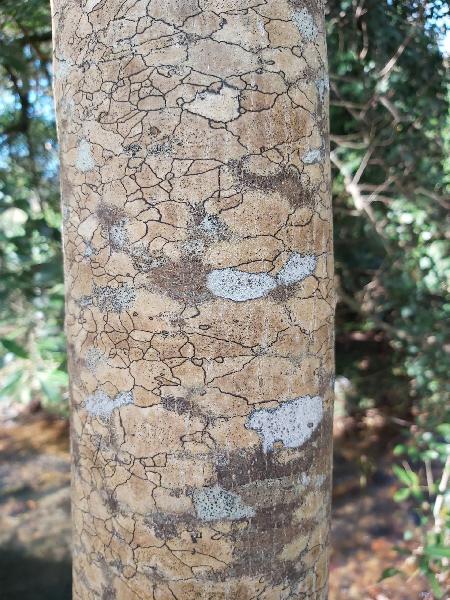
Marta Gonzalez Garcia - Centro de Estudios Micologicos Asturianos
Spain, Jardín Botánico de Gijón, (Asturias), 22-I-2022, en corteza de Alnus lusitanica, leg. & det. Marta González, ERD-9215.
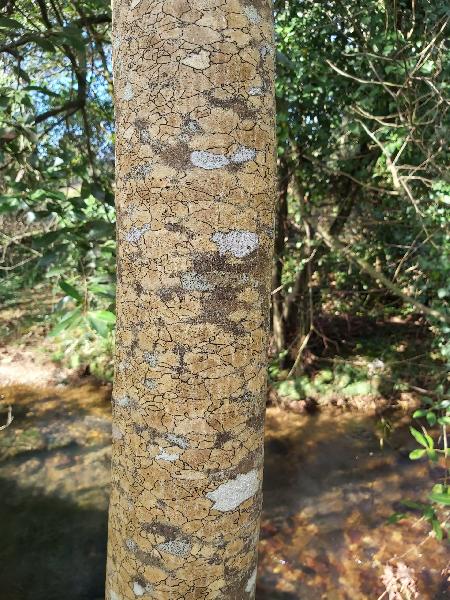
Marta Gonzalez Garcia - Centro de Estudios Micologicos Asturianos
Spain, Jardín Botánico de Gijón, (Asturias), 22-I-2022, en corteza de Alnus lusitanica, leg. & det. Marta González, ERD-9215.
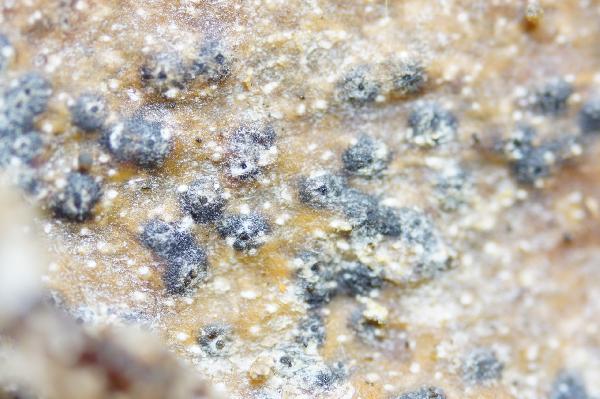
Marta Gonzalez Garcia - Centro de Estudios Micologicos Asturianos
Spain, Jardín Botánico de Gijón, (Asturias), 22-I-2022, en corteza de Alnus lusitanica, leg. & det. Marta González, ERD-9215.
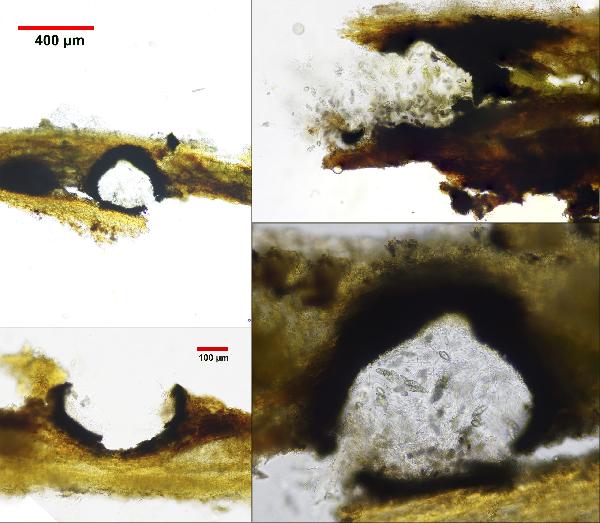
Marta Gonzalez Garcia - Centro de Estudios Micologicos Asturianos
Spain, Jardín Botánico de Gijón, (Asturias), 22-I-2022, en corteza de Alnus lusitanica, leg. & det. Marta González, ERD-9215.
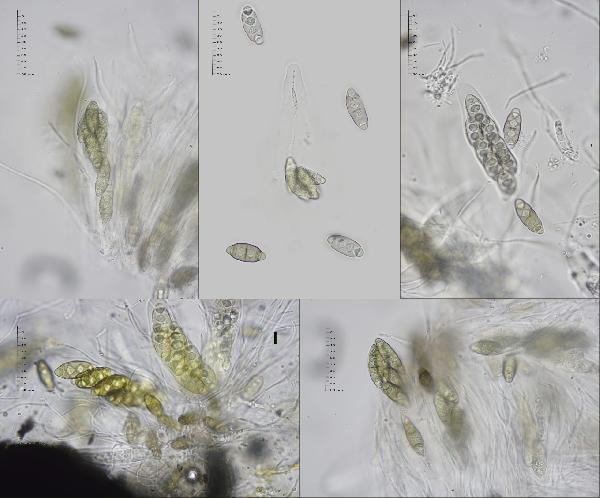
Marta Gonzalez Garcia - Centro de Estudios Micologicos Asturianos
Spain, Jardín Botánico de Gijón, (Asturias), 22-I-2022, en corteza de Alnus lusitanica, leg. & det. Marta González, ERD-9215.
Growth form: Crustose
Substrata: bark
Photobiont: Trentepohlia
Reproductive strategy: mainly sexual
Most common in areas with a humid-warm climate (e.g. most of Tyrrenian Italy)
Commonnes-rarity: (info)
Alpine belt: absent
Subalpine belt: absent
Oromediterranean belt: absent
Montane belt: absent
Submediterranean belt: extremely rare
Padanian area: absent
Humid submediterranean belt: rare
Humid mediterranean belt: very rare
Dry mediterranean belt: absent

Predictive model
| Herbarium samples |


P.L. Nimis; Owner: Department of Life Sciences, University of Trieste
Herbarium: TSB (21928)
2003/03/17


Felix Schumm - CC BY-SA 4.0
[ABL75500], Tenerife, Los Silos, along track to Erjos, on laurisilva tree, 400 m, 28°21’02’’ N, 16°48’48’’ W. Leg. A. Aptroot (no 75500), 8.01.2017, det. A. Aptroot, 2017.
Thallus olive-green to pale brown or fawn; pseudocyphellae 40–120
μm diam., white. Ascomata small, 0.2–0.4 mm diam., often rather
densely arranged, forming very low projections in the thallus or not
forming projections; exciple containing colourless crystals; hamathecium
not inspersed with droplets, without anthraquinones. Ascospores
(25–)28–32(–35) × (9–)11–13(–14) μm, brown, 3-septate. Thallus C-,
K+ yellow, KC-, P+ faintly yellow, UV+ whitish (unidentified
substance).


Felix Schumm - CC BY-SA 4.0
[ABL75500], Tenerife, Los Silos, along track to Erjos, on laurisilva tree, 400 m, 28°21’02’’ N, 16°48’48’’ W. Leg. A. Aptroot (no 75500), 8.01.2017, det. A. Aptroot, 2017.
Thallus olive-green to pale brown or fawn; pseudocyphellae 40–120
μm diam., white. Ascomata small, 0.2–0.4 mm diam., often rather
densely arranged, forming very low projections in the thallus or not
forming projections; exciple containing colourless crystals; hamathecium
not inspersed with droplets, without anthraquinones. Ascospores
(25–)28–32(–35) × (9–)11–13(–14) μm, brown, 3-septate. Thallus C-,
K+ yellow, KC-, P+ faintly yellow, UV+ whitish (unidentified
substance).


Felix Schumm - CC BY-SA 4.0
[ABL75500], Tenerife, Los Silos, along track to Erjos, on laurisilva tree, 400 m, 28°21’02’’ N, 16°48’48’’ W. Leg. A. Aptroot (no 75500), 8.01.2017, det. A. Aptroot, 2017.
Thallus olive-green to pale brown or fawn; pseudocyphellae 40–120
μm diam., white. Ascomata small, 0.2–0.4 mm diam., often rather
densely arranged, forming very low projections in the thallus or not
forming projections; exciple containing colourless crystals; hamathecium
not inspersed with droplets, without anthraquinones. Ascospores
(25–)28–32(–35) × (9–)11–13(–14) μm, brown, 3-septate. Thallus C-,
K+ yellow, KC-, P+ faintly yellow, UV+ whitish (unidentified
substance).


Felix Schumm - CC BY-SA 4.0
[ABL75500], Tenerife, Los Silos, along track to Erjos, on laurisilva tree, 400 m, 28°21’02’’ N, 16°48’48’’ W. Leg. A. Aptroot (no 75500), 8.01.2017, det. A. Aptroot, 2017.
Thallus olive-green to pale brown or fawn; pseudocyphellae 40–120
μm diam., white. Ascomata small, 0.2–0.4 mm diam., often rather
densely arranged, forming very low projections in the thallus or not
forming projections; exciple containing colourless crystals; hamathecium
not inspersed with droplets, without anthraquinones. Ascospores
(25–)28–32(–35) × (9–)11–13(–14) μm, brown, 3-septate. Thallus C-,
K+ yellow, KC-, P+ faintly yellow, UV+ whitish (unidentified
substance).

Bernard Bouffinier - Source: http://www.lichensmaritimes.org/index.php?task=fiche&lichen=421&lang=en
France, Camaret

Bernard Bouffinier - Source: http://www.lichensmaritimes.org/index.php?task=fiche&lichen=421&lang=en
France, Camaret

Bernard Bouffinier - Source: http://www.lichensmaritimes.org/index.php?task=fiche&lichen=421&lang=en
France, Camaret

Bernard Bouffinier - Source: http://www.lichensmaritimes.org/index.php?task=fiche&lichen=421&lang=en
France, Camaret

Bernard Bouffinier - Source: http://www.lichensmaritimes.org/index.php?task=fiche&lichen=421&lang=en
France, Lesteven
with P. macrospora (center)

Jacques Haine - Source: http://www.lichensmaritimes.org/index.php?task=fiche&lichen=421&lang=en
France, Landevennec

Jacques Haine - Source: http://www.lichensmaritimes.org/index.php?task=fiche&lichen=421&lang=en
France, Landevennec

Jacques Haine - Source: http://www.lichensmaritimes.org/index.php?task=fiche&lichen=421&lang=en
France, Landevennec

Jacques Haine - Source: http://www.lichensmaritimes.org/index.php?task=fiche&lichen=421&lang=en
France, Landevennec

Marta Gonzalez Garcia - Centro de Estudios Micologicos Asturianos
Spain, Jardín Botánico de Gijón, (Asturias), 22-I-2022, en corteza de Alnus lusitanica, leg. & det. Marta González, ERD-9215.

Marta Gonzalez Garcia - Centro de Estudios Micologicos Asturianos
Spain, Jardín Botánico de Gijón, (Asturias), 22-I-2022, en corteza de Alnus lusitanica, leg. & det. Marta González, ERD-9215.

Marta Gonzalez Garcia - Centro de Estudios Micologicos Asturianos
Spain, Jardín Botánico de Gijón, (Asturias), 22-I-2022, en corteza de Alnus lusitanica, leg. & det. Marta González, ERD-9215.

Marta Gonzalez Garcia - Centro de Estudios Micologicos Asturianos
Spain, Jardín Botánico de Gijón, (Asturias), 22-I-2022, en corteza de Alnus lusitanica, leg. & det. Marta González, ERD-9215.

Marta Gonzalez Garcia - Centro de Estudios Micologicos Asturianos
Spain, Jardín Botánico de Gijón, (Asturias), 22-I-2022, en corteza de Alnus lusitanica, leg. & det. Marta González, ERD-9215.

Marta Gonzalez Garcia - Centro de Estudios Micologicos Asturianos
Spain, Jardín Botánico de Gijón, (Asturias), 22-I-2022, en corteza de Alnus lusitanica, leg. & det. Marta González, ERD-9215.

 INDEX FUNGORUM
INDEX FUNGORUM
 GBIF
GBIF
